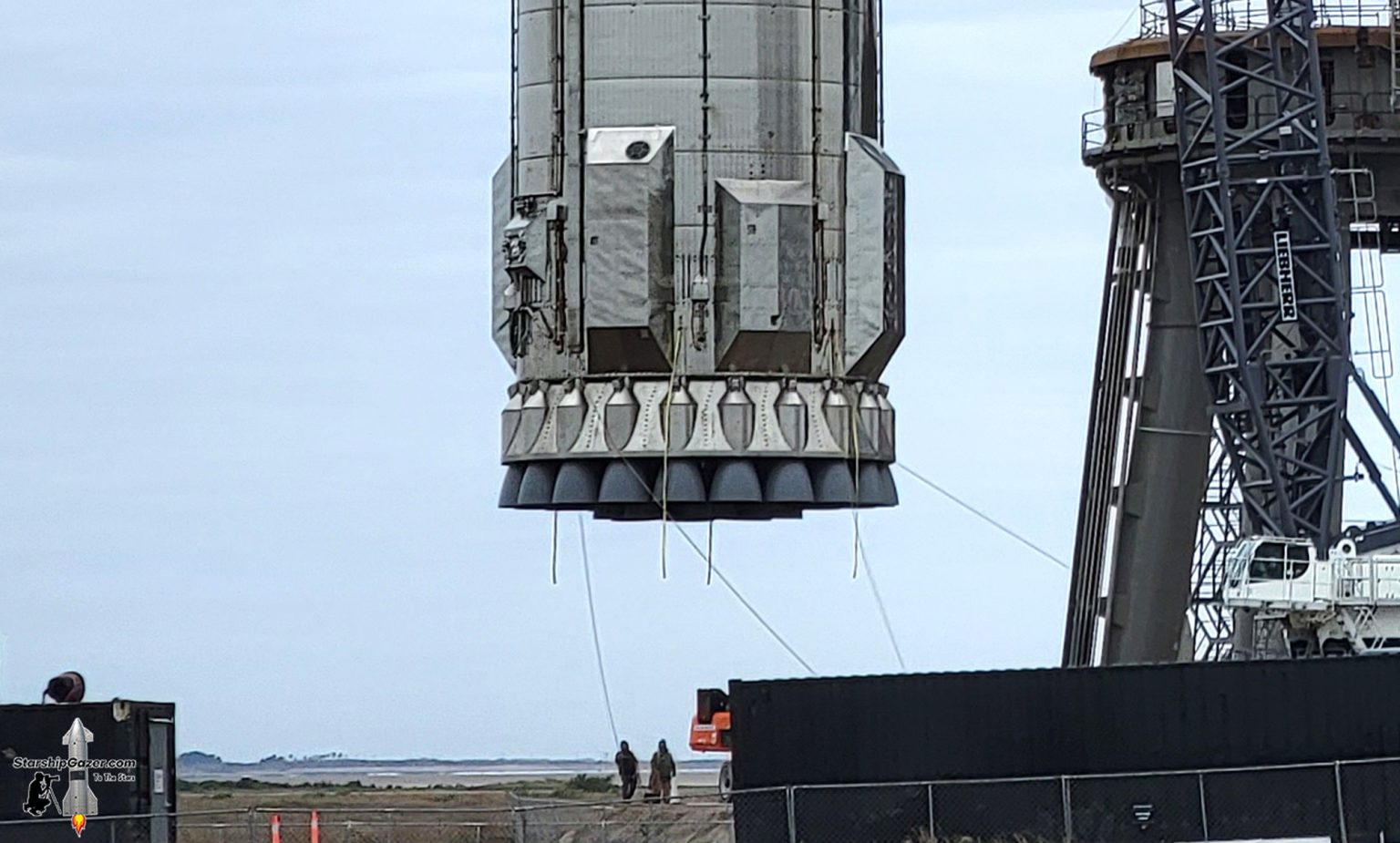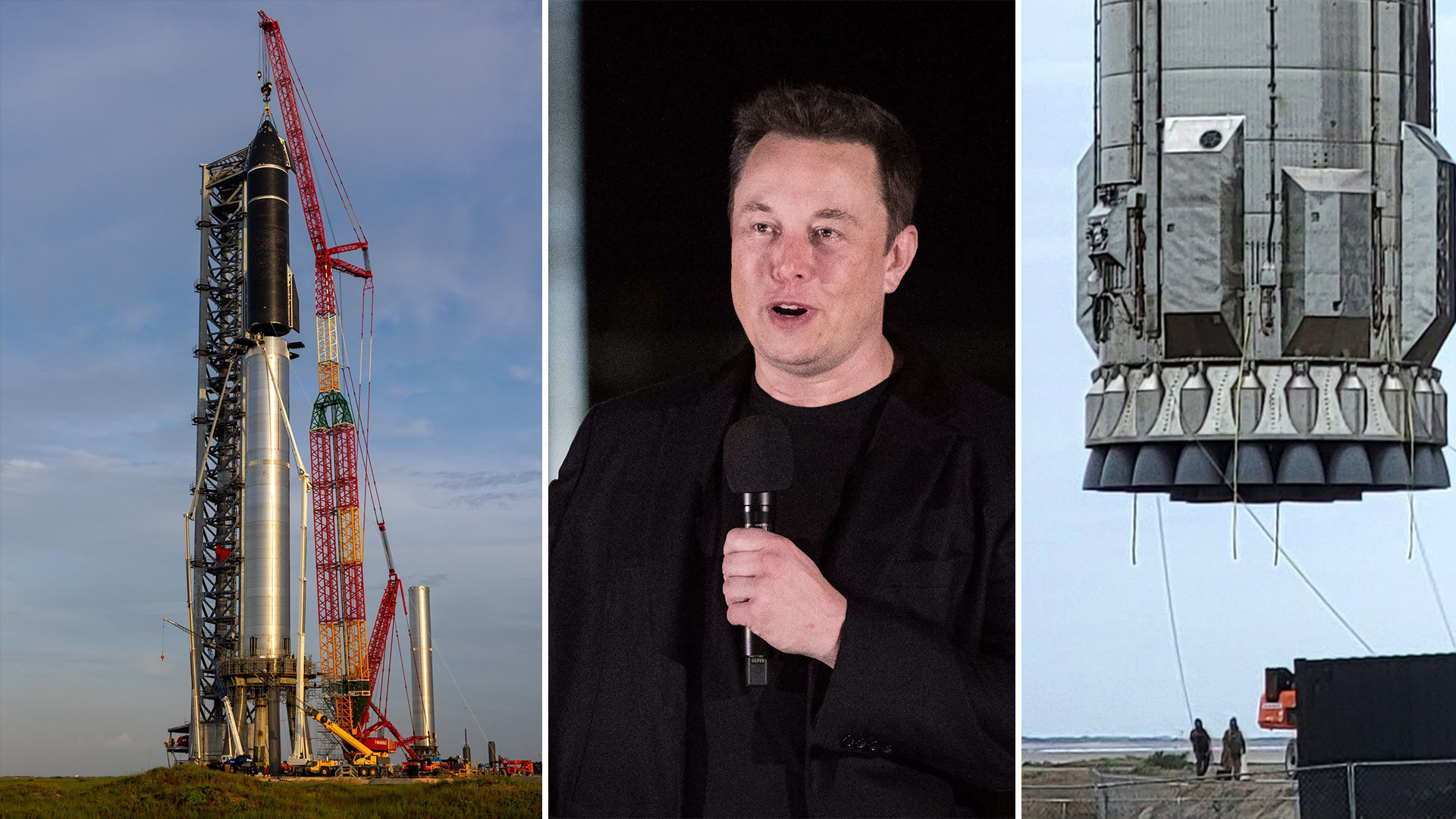Super Heavy Booster 4 (B4) has been mounted on Starbase’s lone orbital launch platform for the third time, beginning off preparations for CEO Elon Musk’s imminent presentation.
However, in an illogical move, SpaceX elected to deploy Super Heavy on the ‘orbital launch mount’ using a crane rather than a complicated set of huge arms specifically built to lift, stack, and catch Starship gear that the firm has spent months developing and testing.
And a few more: pic.twitter.com/j53tPF6N5r
— Starship Gazer (@StarshipGazer) February 6, 2022
This does not seem to make a lot of sense. One apparent reason is that those arms are not suitable for lifting and stacking activities, despite passing several lift tests with hundreds of tonnes of water bags in recent weeks.
However, since Starbase lacks a crane big enough to hoist Starship S20 onto Booster 4, SpaceX will very definitely rely on the tower’s arms.
Starship Super Heavy is lifted to the orbital pad ⬆️, @spacex teams for scale. #Starship
📷: https://t.co/98CAvJZOIc pic.twitter.com/X8W6mjkpx2
— Cosmic Perspective (@considercosmos) February 6, 2022
Stacking with arms can free SpaceX from the significant weather and wind restrictions that cranes impose when lifting large objects by replacing the need for large cranes.
In principle, gigantic stiff arms linked to a relatively immovable tower should be able to prevent Starships or Super Heavy boosters from swaying dangerously in strong winds.
That is critical for SpaceX to be able to quickly reuse Starships launched from Boca Chica on the South Texas coast, where high winds are common for months at a time.

Furthermore, although there are many reasons to mistrust SpaceX’s intentions to capture Super Heavy and Starship in the air, it would make sense to at least test a portion of the process with Super Heavy B4 by utilizing the arms to pull the booster up the tower and drop it onto the launch platform.
If the arms are unable of doing so, the only action for which they will be helpful is stacking Starships on top of boosters.
Finally, there should be just a little issue with the arms, such that SpaceX has enough faith in them to lift a 100 tonne (220,000 lb) Starship approximately 100 meters (330 ft) off the ground but not a 200 tonne (450,000 lb) rocket 50 meters (165 ft) off the ground.
It could also be a problem with Booster 4, a one-of-a-kind Super Heavy prototype, though Starship S20 is no less of a trailblazer.
The tower arms’ initial test with actual hardware — in this instance, the Starship S20 – might be next. The spacecraft might be hoisted onto Booster 4 as early as today, February 6th, depending on SpaceX’s readiness, but the corporation has a few days of buffer before Elon Musk’s anticipated February 10th announcement. Even though Booster 4 is nowhere near ready for takeoff, the fully loaded Starship will most likely serve as a background for the ceremony.

